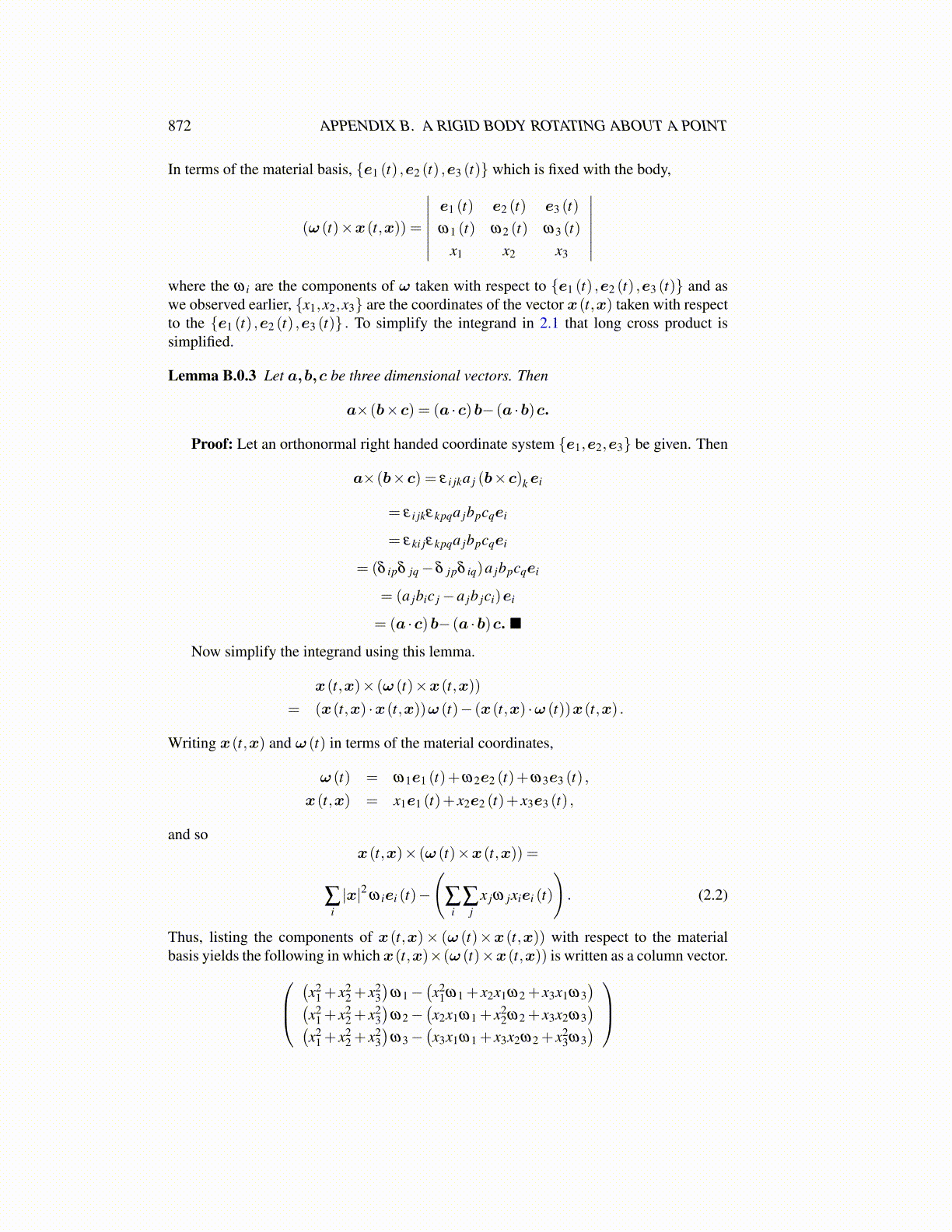
872 APPENDIX B. A RIGID BODY ROTATING ABOUT A POINT
In terms of the material basis, {e1 (t) ,e2 (t) ,e3 (t)} which is fixed with the body,
(ω (t)×x(t,x)) =
∣∣∣∣∣∣∣e1 (t) e2 (t) e3 (t)ω1 (t) ω2 (t) ω3 (t)
x1 x2 x3
∣∣∣∣∣∣∣where the ω i are the components of ω taken with respect to {e1 (t) ,e2 (t) ,e3 (t)} and aswe observed earlier, {x1,x2,x3} are the coordinates of the vector x(t,x) taken with respectto the {e1 (t) ,e2 (t) ,e3 (t)} . To simplify the integrand in 2.1 that long cross product issimplified.
Lemma B.0.3 Let a,b,c be three dimensional vectors. Then
a×(b×c) = (a ·c)b− (a ·b)c.
Proof: Let an orthonormal right handed coordinate system {e1,e2,e3} be given. Then
a×(b×c) = ε i jka j (b×c)k ei
= ε i jkεkpqa jbpcqei
= εki jεkpqa jbpcqei
= (δ ipδ jq−δ jpδ iq)a jbpcqei
= (a jbic j−a jb jci)ei
= (a ·c)b− (a ·b)c. ■
Now simplify the integrand using this lemma.
x(t,x)× (ω (t)×x(t,x))
= (x(t,x) ·x(t,x))ω (t)− (x(t,x) ·ω (t))x(t,x) .
Writing x(t,x) and ω (t) in terms of the material coordinates,
ω (t) = ω1e1 (t)+ω2e2 (t)+ω3e3 (t) ,
x(t,x) = x1e1 (t)+ x2e2 (t)+ x3e3 (t) ,
and sox(t,x)× (ω (t)×x(t,x)) =
∑i|x|2 ω iei (t)−
(∑
i∑
jx jω jxiei (t)
). (2.2)
Thus, listing the components of x(t,x)× (ω (t)×x(t,x)) with respect to the materialbasis yields the following in which x(t,x)×(ω (t)×x(t,x)) is written as a column vector.
(x2
1 + x22 + x2
3)
ω1−(x2
1ω1 + x2x1ω2 + x3x1ω3)(
x21 + x2
2 + x23)
ω2−(x2x1ω1 + x2
2ω2 + x3x2ω3)(
x21 + x2
2 + x23)
ω3−(x3x1ω1 + x3x2ω2 + x2
3ω3)